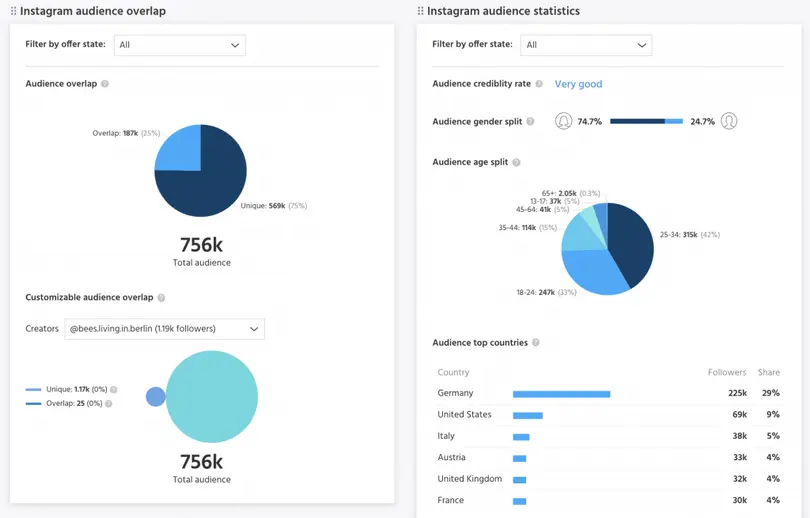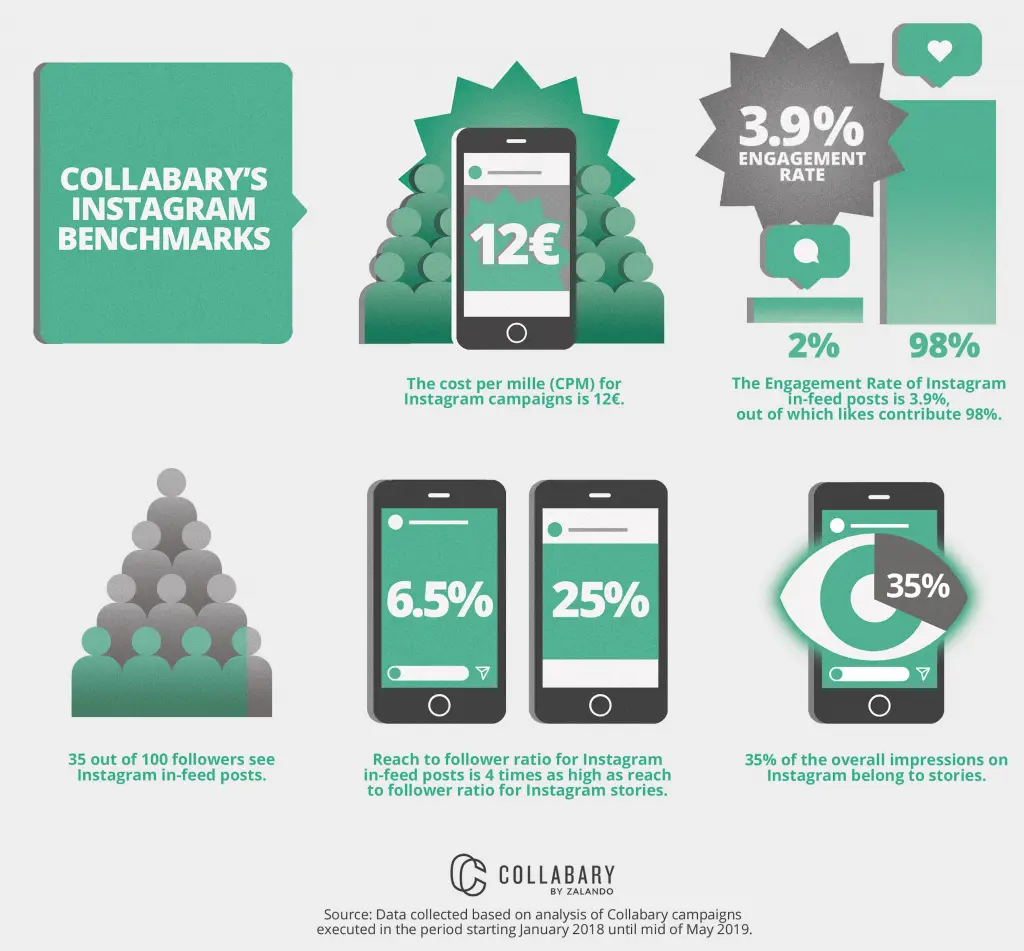How could alternative pricing models look like in influencer marketing instead of the established pay per post? Dr. Stefano Balestra, Managing Director at Collabary by Zalando, presents two models that would provide greater levels of transparency in the market.
In recent years, the entire influencer market has become increasingly professional. However, the issue of pricing in influencer partnerships is still a black-box. If you’d initially have paid per post or per blog post, you would be primarily concerned about reach and engagement rates just a few years later. These classic factors are important and have a justified influence on the price. Today, however, they are increasingly being supplemented and challenged by other factors.
It is no longer important that the influencer simply reaches people - the question “Who are they reaching?” has taken on greater significance among marketers and thus also affects price negotiations. From a marketer’s perspective, the composition of the influencer’s audience is now the decisive relevance factor.
Influencer’s audience data you should be aware of:
- Audience demographics: Audience demographics take into account data like gender, age groups and location. Choosing the right age group and location obviously are no-brainers. Even the most trending female influencer might not be the right choice for your brand if she has 70% male audience.
- Audience credibility: The audience credibility shows how likely it is that the followers are authentic. It takes into account a number of factors such as the avatar and bio description of the followers.
- Audience reachability: Having one million followers doesn’t mean that one million people will see the content posted by the creator. This is why you need to look at the audience reachability, which shows how likely it is that the content is seen by the followers.
- Audience interest: Check what topics your influencer’s audience is interested in. If they don’t fit with your brand message, go for another influencer.
- Audience overlap: When working with several influencers, looking at each and every creator in your campaign individually is not enough. Check their audience overlap! This means, the share of audience following only one creator and audience which follows multiple creators. The less overlap the bigger your audience. A bigger overlap means that one follower might be exposed to the same brand message by two different content creators (if you want to go for market penetration with your brand, this might be a good approach to follow).
Note: Do not only look at the audience data individually but also have a look at it accumulated on your campaign overview. Organising your selected influencers in collections is key.

Accumulated audience data of your influencer selection on Collabary.
If an influencer has one million followers, 50 percent of which are based in Italy, why should you pay for that part of the audience if the Italian market is of no relevance to you? From this perspective, it makes sense for the industry to consider alternative pricing models and forms of cooperation in influencer marketing. Performance is the decisive keyword here. Such models are data-driven and fairer for marketers, but they also demand something of the influencer.
I don’t think it’ll be long before we bid farewell to the “Brand pays influencer a fixed amount for a post on Instagram” model. Performance-driven models are simply more attractive, especially for marketers. So, what could such models look like?
Model 1: Base price + bonuses
With these models, the brand pays the influencer a basic amount for the post. In addition, sales targets are agreed with the influencer that must be reached for bonus payments. Alternatively, the influencer can be rewarded for every sale. I see the chance here, that the bonuses will give the influencers extra motivation when they are creating and presenting products. After all, the more sales a post generates, the more lucrative a partnership becomes for the influencer. Such a system would be transparent for both sides. We are currently testing such models. Furthermore, a performance-based bonus system can also be used for upper funnel KPIs such as:
- Impressions: Pay your influencer based on the number of impressions generated. This might mean that the influencer has to post several times to reach the agreed number of impressions.
- Clicks: Pay influencer bonus for generating clicks on your landing page.
- Share of Voice in social media: Another metric to use here is your brands’ Share of Voice in social media. To increase this, the influencer can be asked to increase the number of postings using the campaign and brand hashtag.
All this can be measured using technology. The target agreement in the run-up to the campaign just needs to be adjusted accordingly.
A further advantage is that the problem of fake followers is eliminated, as pricing is based on actions rather than reach. Calculating the base amount that the influencer will receive will be key for such models. This base price will very likely be below the market prices charged at the moment.
In the period from the beginning of 2018 to May 2019, we evaluated around 2,000 influencer campaign posts on Collabary and determined an average CPM, including content production, of around 12 euros. This will decrease further if such performance-based models prevail and the base amount is calculated instead. Such developments will transform the market once again, as the base amount will become even smaller or even disappear completely if an influencer cooperates with large brands with a good sales potential. After all, a revenue share in a strong brand with good sales opportunities is more attractive for the influencer than a basic fee. Today, this is often reversed, since fees tend to increase in accordance with the size and popularity of the brand.

Instagram benchmarks for influencer marketing campaigns
Model 2: Affiliate models for existing content
For brands, an attractive feature with model 2 is that there’s no need to create any new content. The platform is screened for existing content and the brand then adds affiliate links to the existing influencer content. For platforms with a high content rotation in the user feed – such as Instagram – this would be technically much more complex than with Pinterest or YouTube. Both platforms offer content services for users with a long half-life. The influencer would be remunerated through an affiliate commission, which can be individually negotiated and adjusted. This would be a “back to basics” development; back to the roots of influencer marketing when bloggers financed themselves through product reviews and affiliate links.
What is stopping brands from doing this as well? Posts can’t become more authentic. The only challenge is not to distribute the links in an inflationary manner and thus ensure internal quality assurance. Good content will be rewarded and enhanced with the affiliate link; bad content will simply not receive a link.
One way to screen platforms like Instagram on existing, and highly performing content, is the Collabary Content Discovery: The Content Discovery is a feature that enables you to find, collect, engage and repurpose relevant content created by social media influencers. With this feature, you have the chance to search for dedicated hashtags and even define your search with filters:
- Time frame: This is particularly important when looking for seasonal content. In the example we screened the platform for content related to Halloween, hence only looking in the weeks leading to the 31st of October
- Country: When looking for market and language specific content this filter will help you out.
- Gender: Depending on the key target group you can filter for the gender of the influencer.
- Number of followers: Filter for numbers of followers to find content generated by small influencers to discover new talents. Or go big and search for influencer who already have a huge following
Additional clustering of your search results by engagement, likes, or most currently posted, will help to go even more granular.

Collabary Content Discovery: Search results for #halloween filtered by timeframe and number of followers
Summary
In both models, technology, tools and platforms will become more important thanks to research, audience evaluation, sales tracking, monitoring and reporting prior to billing. It is only in this way that both models will lead to the greatest possible transparency for both sides.
Despite the increasing use of technology, it should not be forgotten that the entire influencer business is a marketing discipline that continues to be characterized by and dependent on soft factors as well as good relationships between the brand and influencer. After all, the enthusiasm and authenticity of influencers for the brands they work with and the content creation itself is what distinguishes influencer marketing from other industries and makes it so successful.
What these models do, however, is allow the marketer to see if the influencer has confidence in the quality of their audience. The question remains to what extent influencers across the board will or must engage with these performance-based models.
If you want to learn more about how to negotiate pricings with influencers for your next campaign, reach out to Collabarys’ partner consultants and request a personal demo via Collabary.





